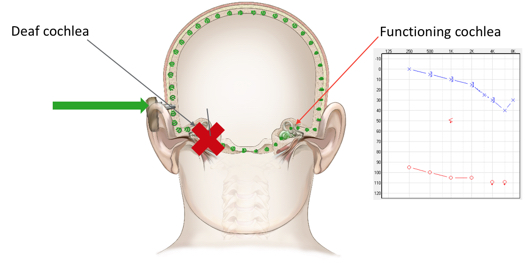Question
Hearing loss in only one ear, “what’s the big deal?”
Answer
Listening & Learning Challenges
- In the presence of noise, it will be harder for a child with unilateral hearing loss to pick up new words.
- Hearing from a distance is a challenge.
- Children with unilateral hearing loss may be 10 times more likely to fail a grade in school or need special help to keep up.
- 1/3 to 1/2 of children with hearing loss who have not received help to hear better have problems learning in school.
Children with unilateral hearing loss may be 10 times more likely to fall behind and need special help to keep up in school, compared to their average hearing peers. Because most rules of social interaction are learned via subtle auditory cues and visual cues, rather than direct teaching. It isn’t a surprise that about 1/5 of these children will develop behavior or social issues. Learning issues, inside and outside the classroom are largely due to missing incidental speech that occurs in the environment. Often the big question from professionals and from parents is, "What's the big deal? "It's hearing loss in only one ear." Parents, educators, health professionals might say, "The child's doing fine. "They're doing fine in school, she is getting good grades. What's the big deal?" Even though a child hears well in one ear, whenever there's noise or the speaker or sound is at a distance the child will miss part of what is being said or the sound that's being heard. We all know how difficult these situations can be to hear and the amount of effort used in noisy and complex situations.

Figure 1. Audiogram of unilateral sensorineural hearing loss.
A bone anchored system, such as the Ponto is a beneficial solution for several patient groups with unilateral hearing loss. Figure 1 shows the audiogram of a person with single-sided deafness. These patients have severe hearing loss on one side, often a completely deaf cochlea, and one cochlea that has normal hearing on the other side. In this instance a sound processor is placed on the non-hearing, deaf side, and picks up sound that is transferred to the functioning better ear cochlea on the opposite side via bone conduction.
This Ask the Expert is an excerpt from the CE Course, Unilateral Hearing Loss: Advocating for Children through Early Intervention Services and in the Classroom.


